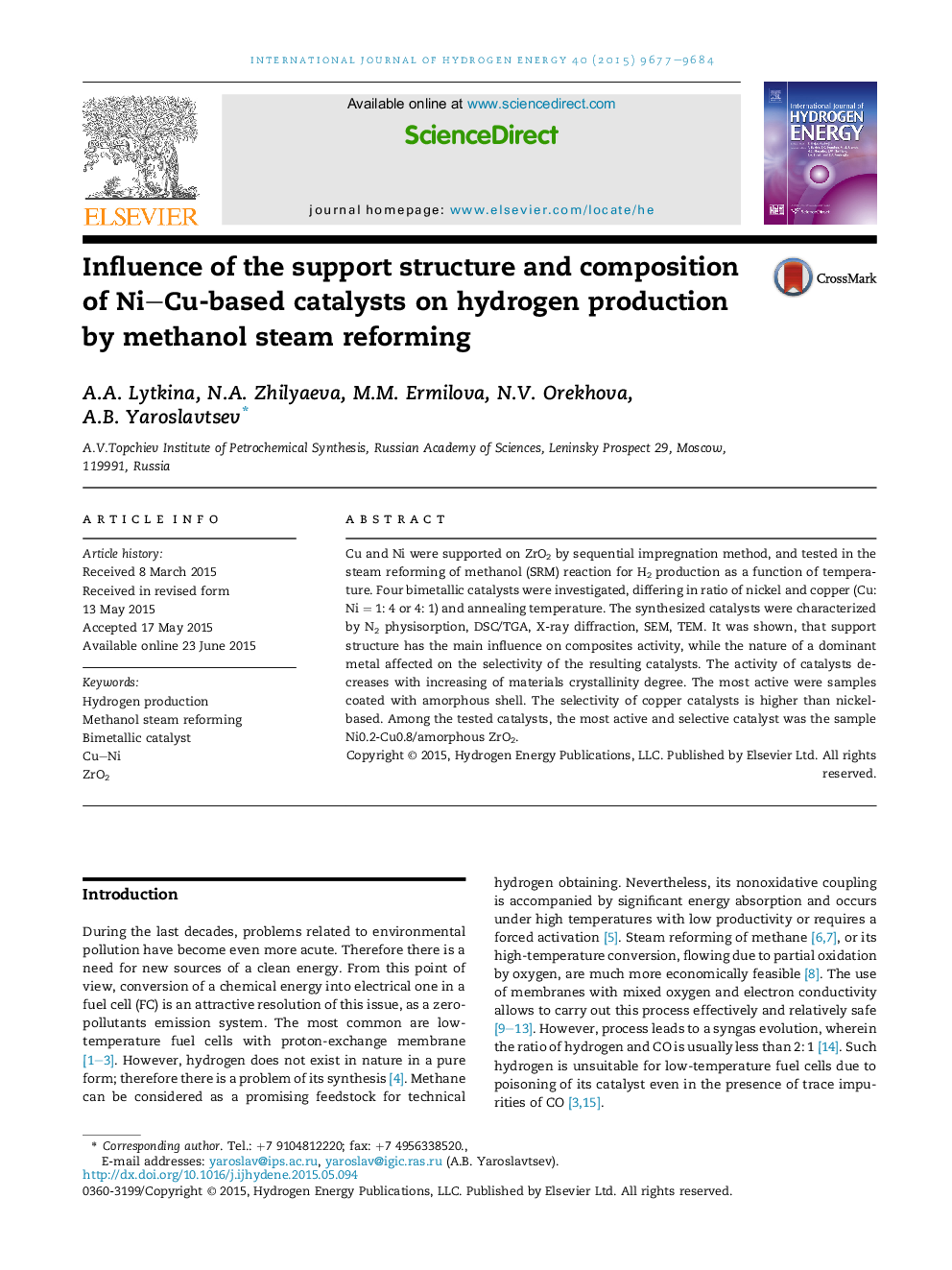| Article ID | Journal | Published Year | Pages | File Type |
|---|---|---|---|---|
| 1274861 | International Journal of Hydrogen Energy | 2015 | 8 Pages |
•Ni–Cu/ZrO2 systems were used as catalysts in methanol steam reforming.•Support structure had the main influence on composites activity.•The nature of a dominant metal affected on the selectivity of the catalysts.•The most active and selective catalyst was the sample Ni0.2-Cu0.8/amorphous ZrO2.
Cu and Ni were supported on ZrO2 by sequential impregnation method, and tested in the steam reforming of methanol (SRM) reaction for H2 production as a function of temperature. Four bimetallic catalysts were investigated, differing in ratio of nickel and copper (Cu: Ni = 1: 4 or 4: 1) and annealing temperature. The synthesized catalysts were characterized by N2 physisorption, DSC/TGA, X-ray diffraction, SEM, TEM. It was shown, that support structure has the main influence on composites activity, while the nature of a dominant metal affected on the selectivity of the resulting catalysts. The activity of catalysts decreases with increasing of materials crystallinity degree. The most active were samples coated with amorphous shell. The selectivity of copper catalysts is higher than nickel-based. Among the tested catalysts, the most active and selective catalyst was the sample Ni0.2-Cu0.8/amorphous ZrO2.
Graphical abstractTypical TEM image and hydrogen yield in SRM reaction on: 1) Cu0.8-Ni0.2/ amorphous ZrO2; 2) Cu0.2-Ni0.8/ amorphous ZrO2; 3) Cu0.8-Ni0.2/ monoclinic ZrO2; 4) Cu0.2-Ni0.8/ monoclinic ZrO2 catalysts.Figure optionsDownload full-size imageDownload as PowerPoint slide
